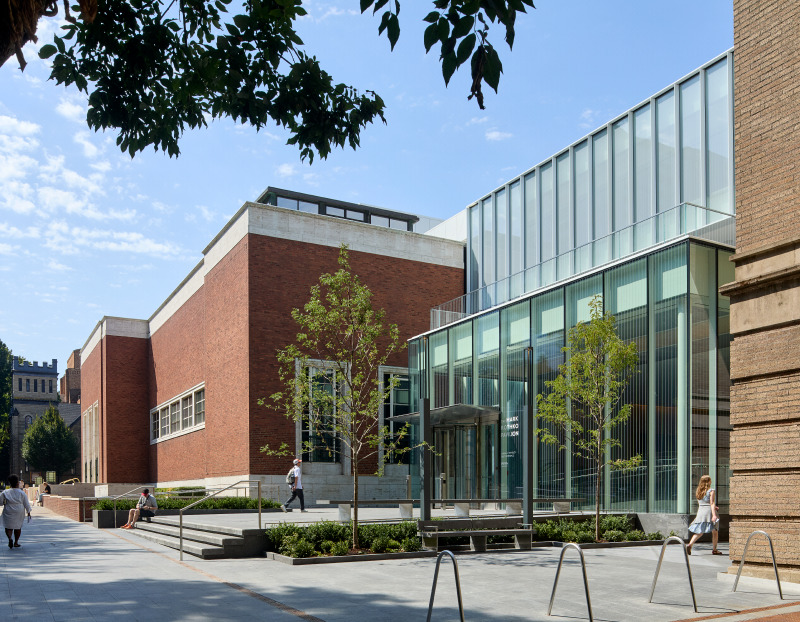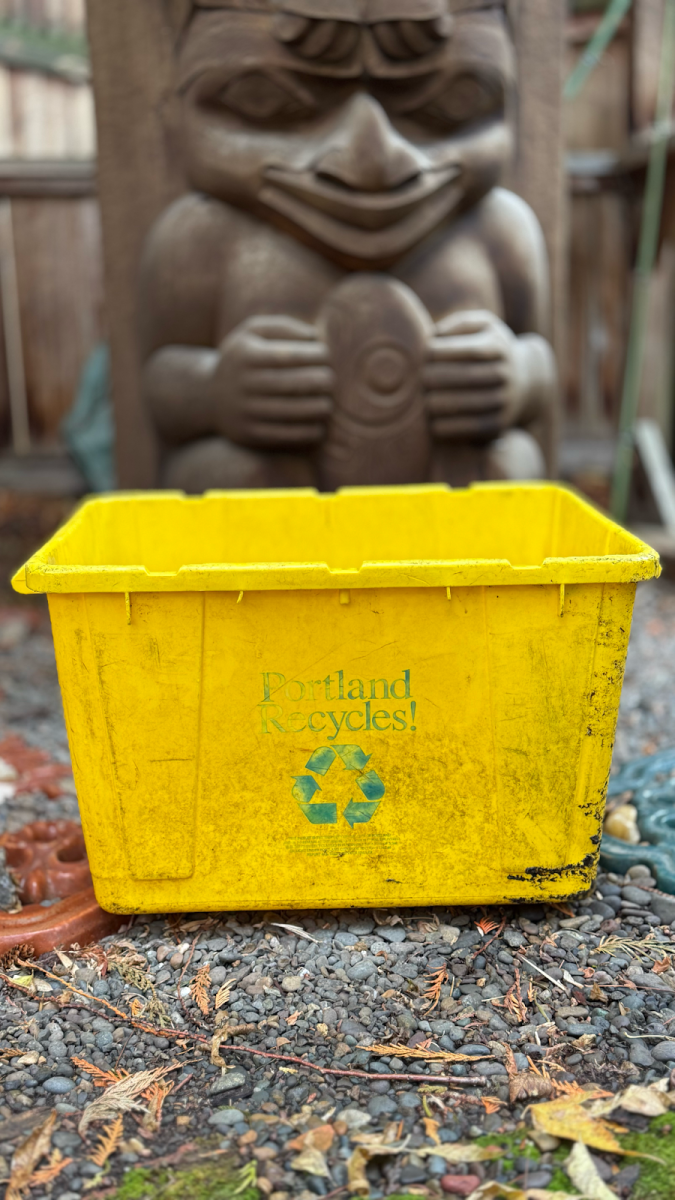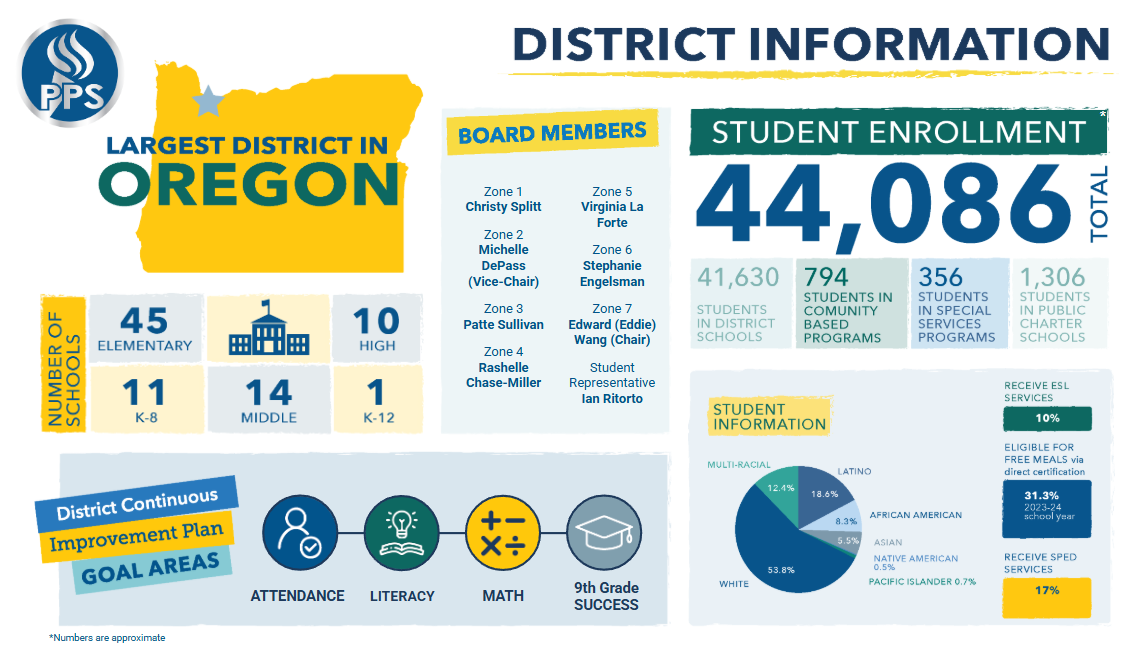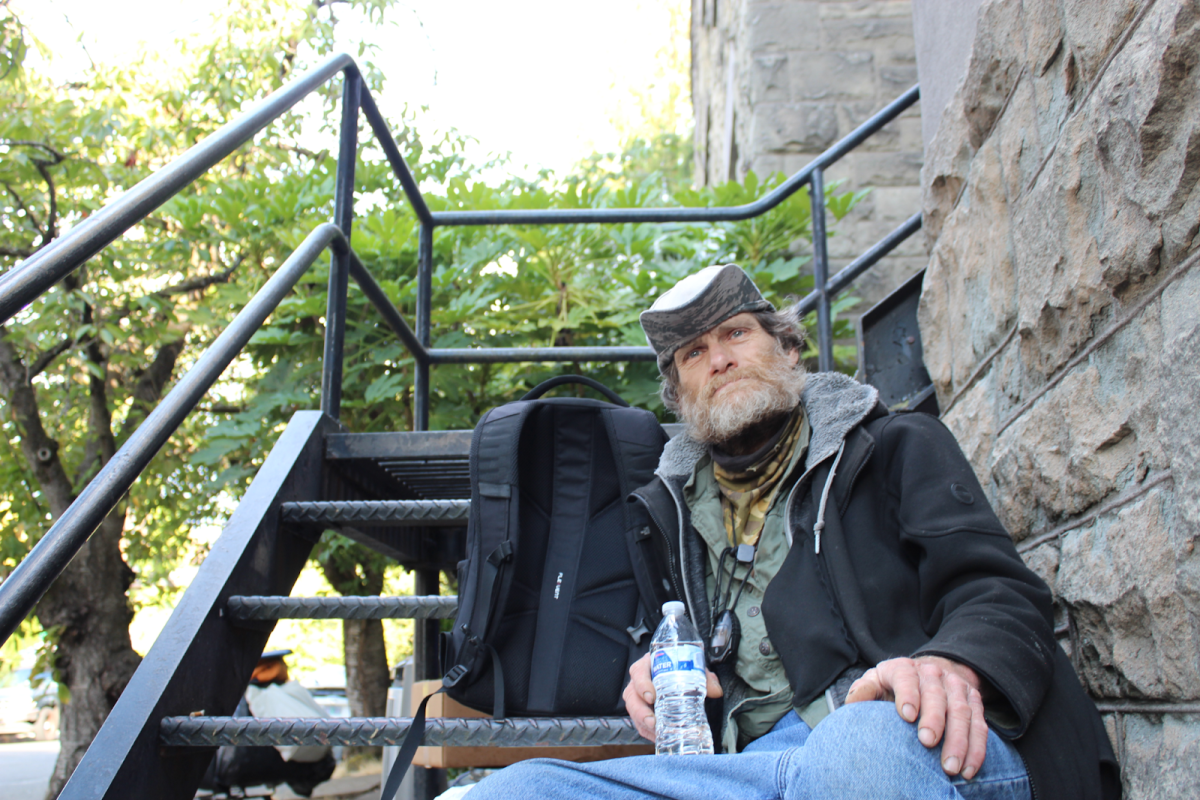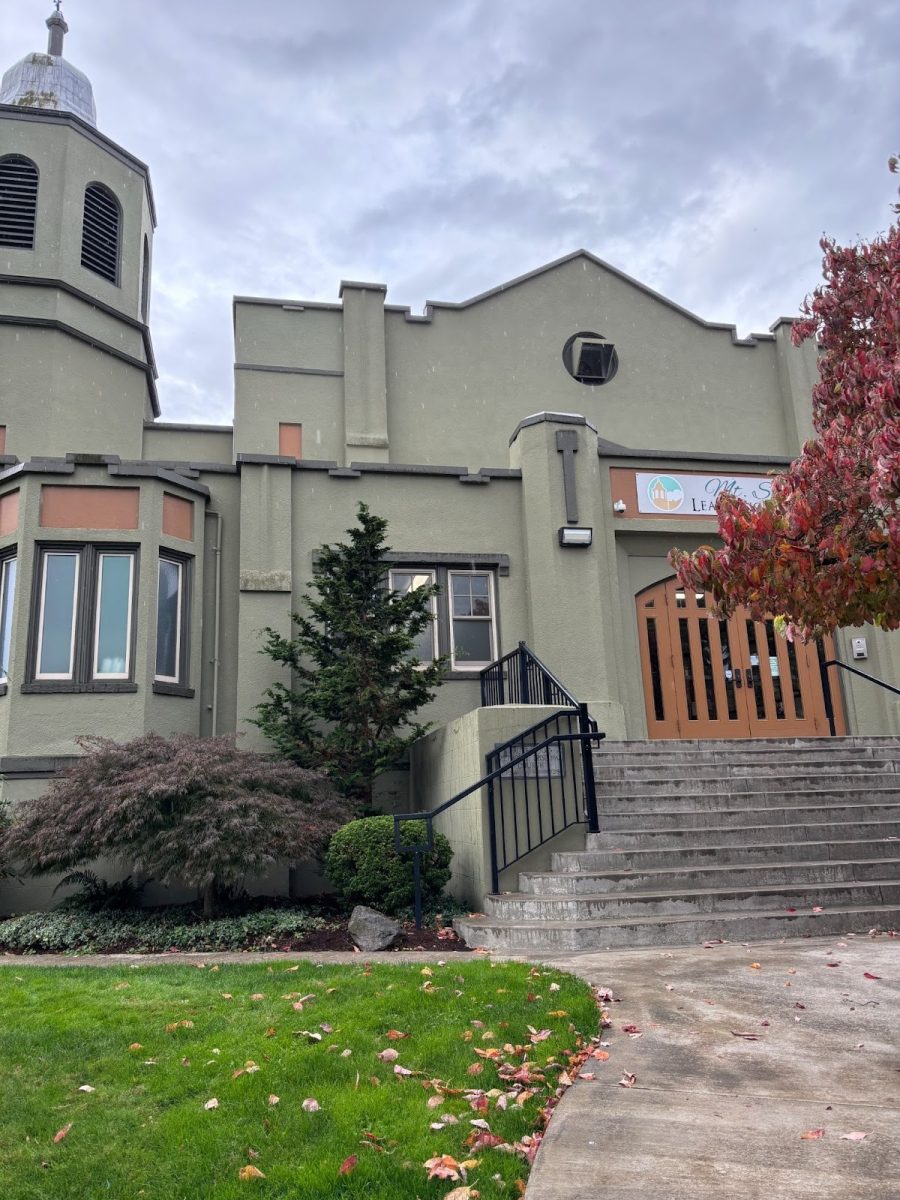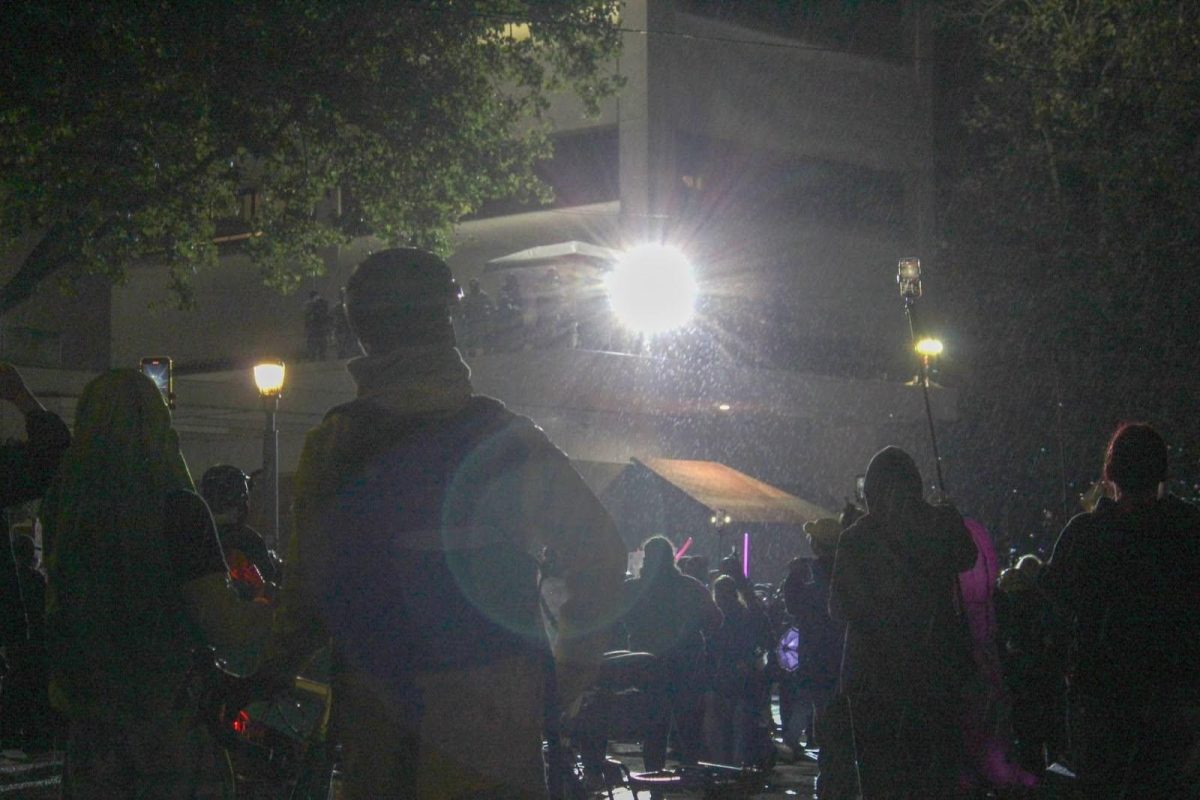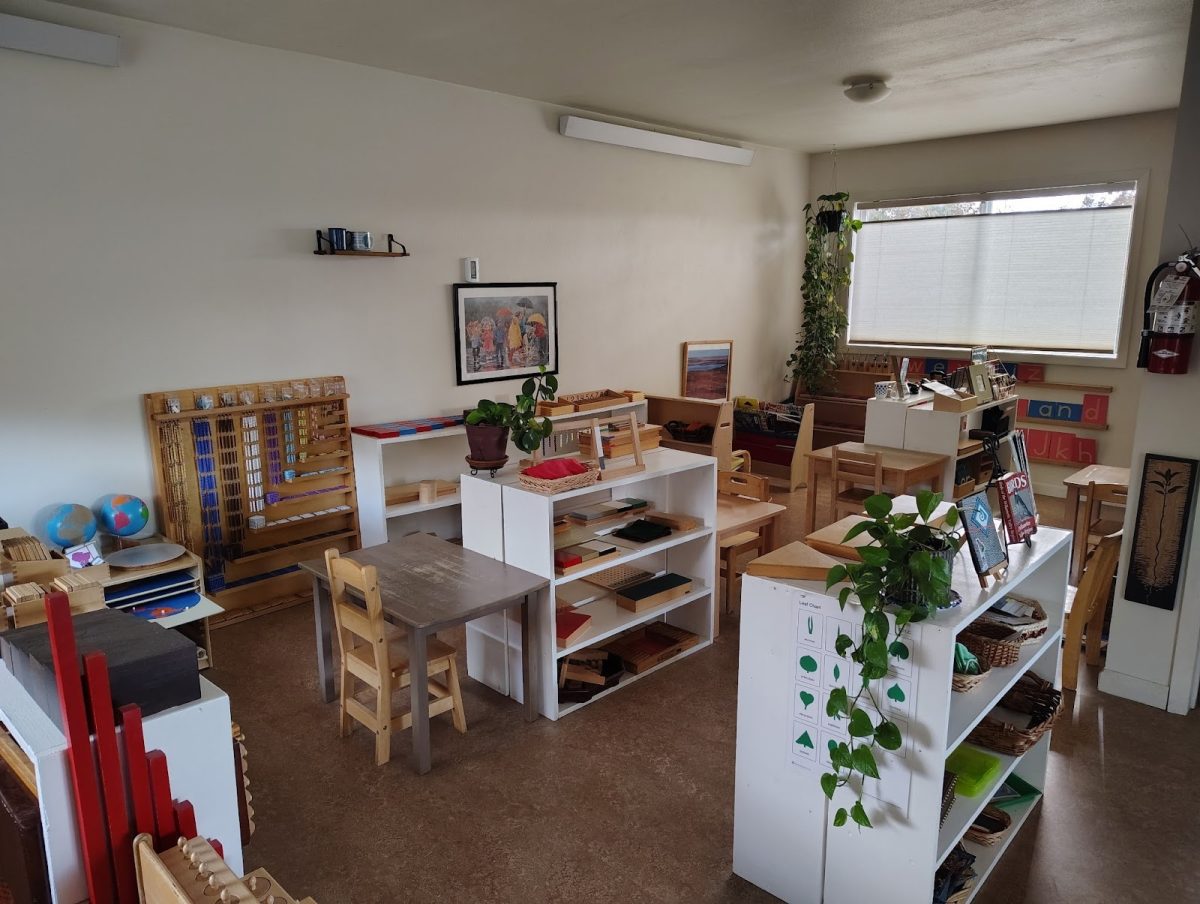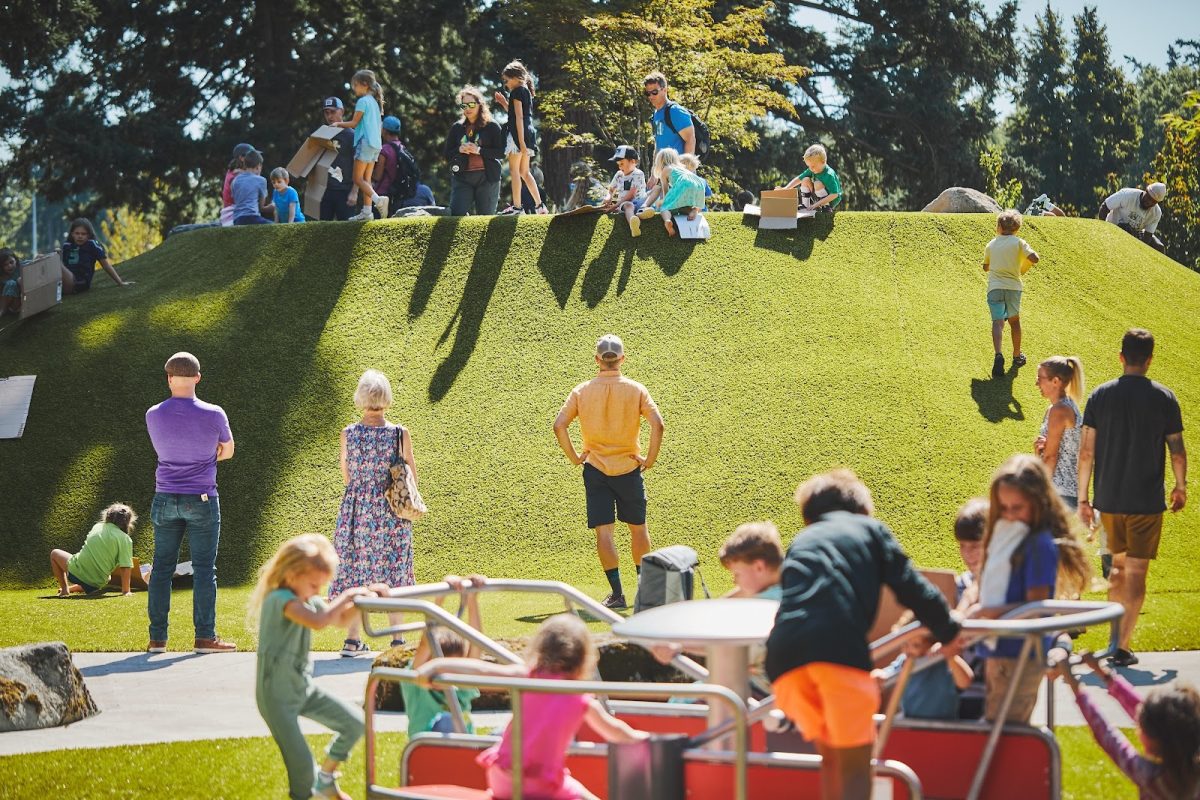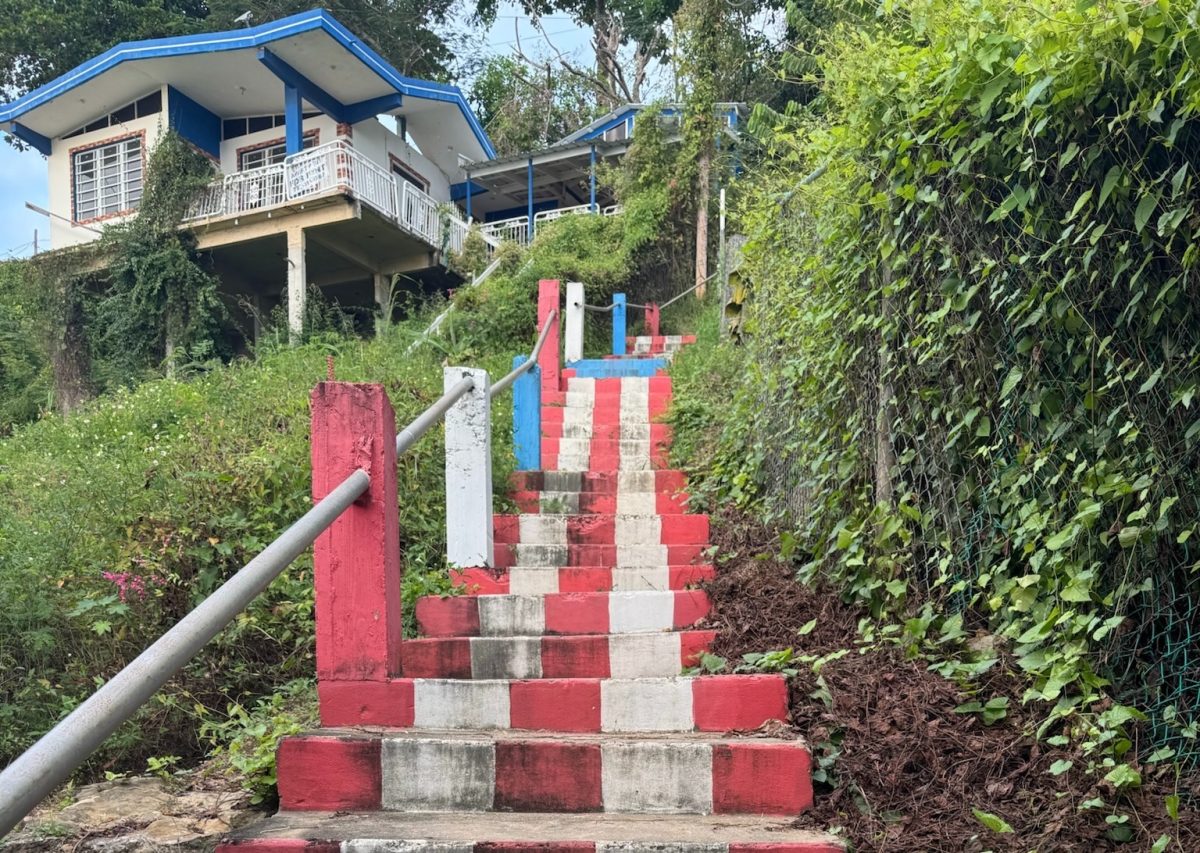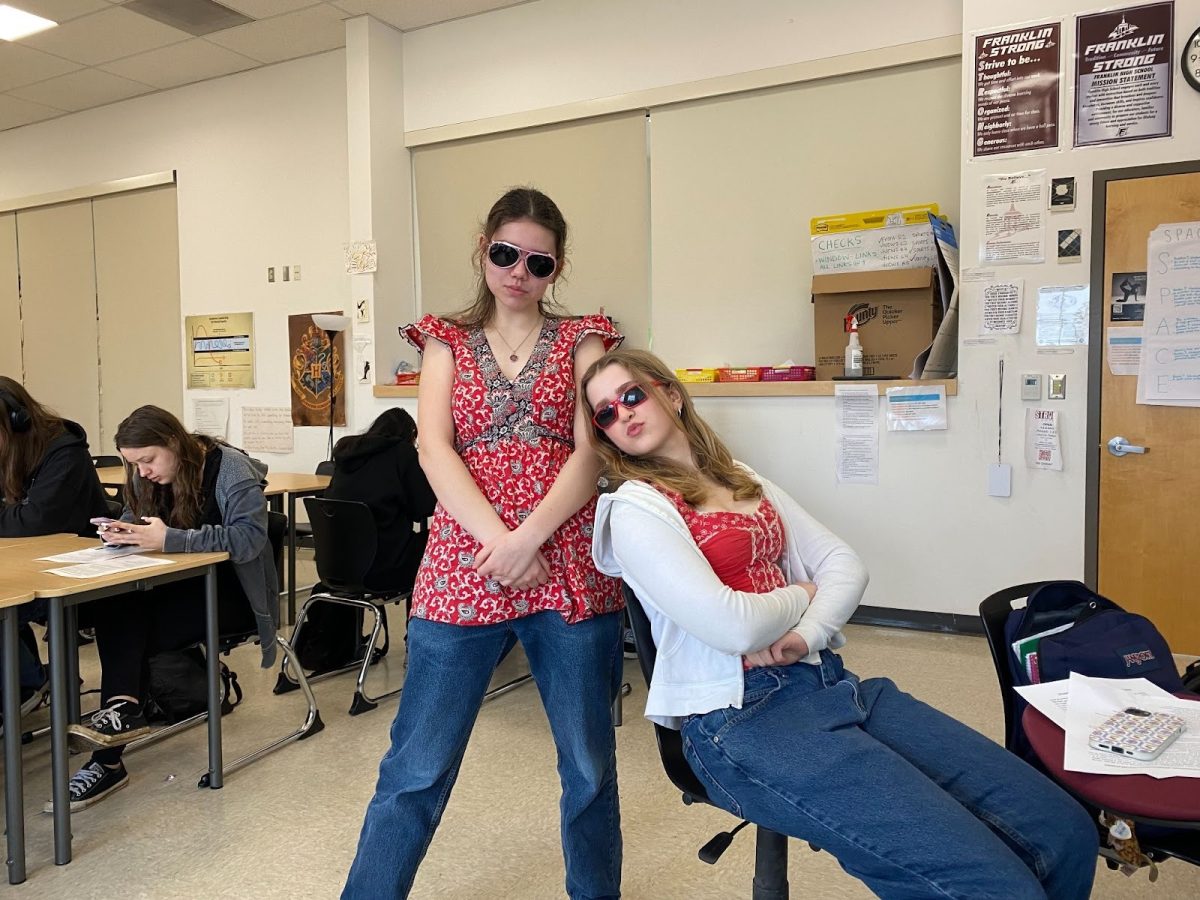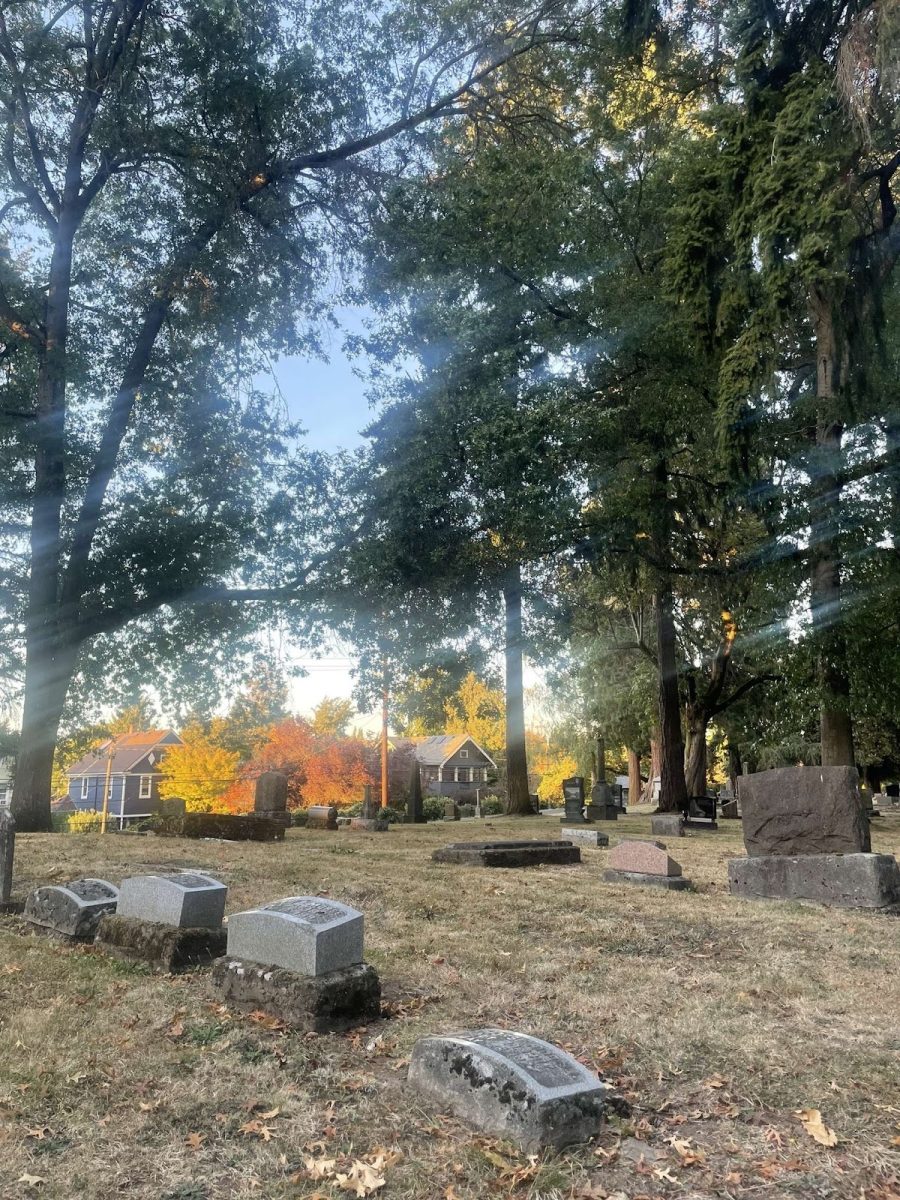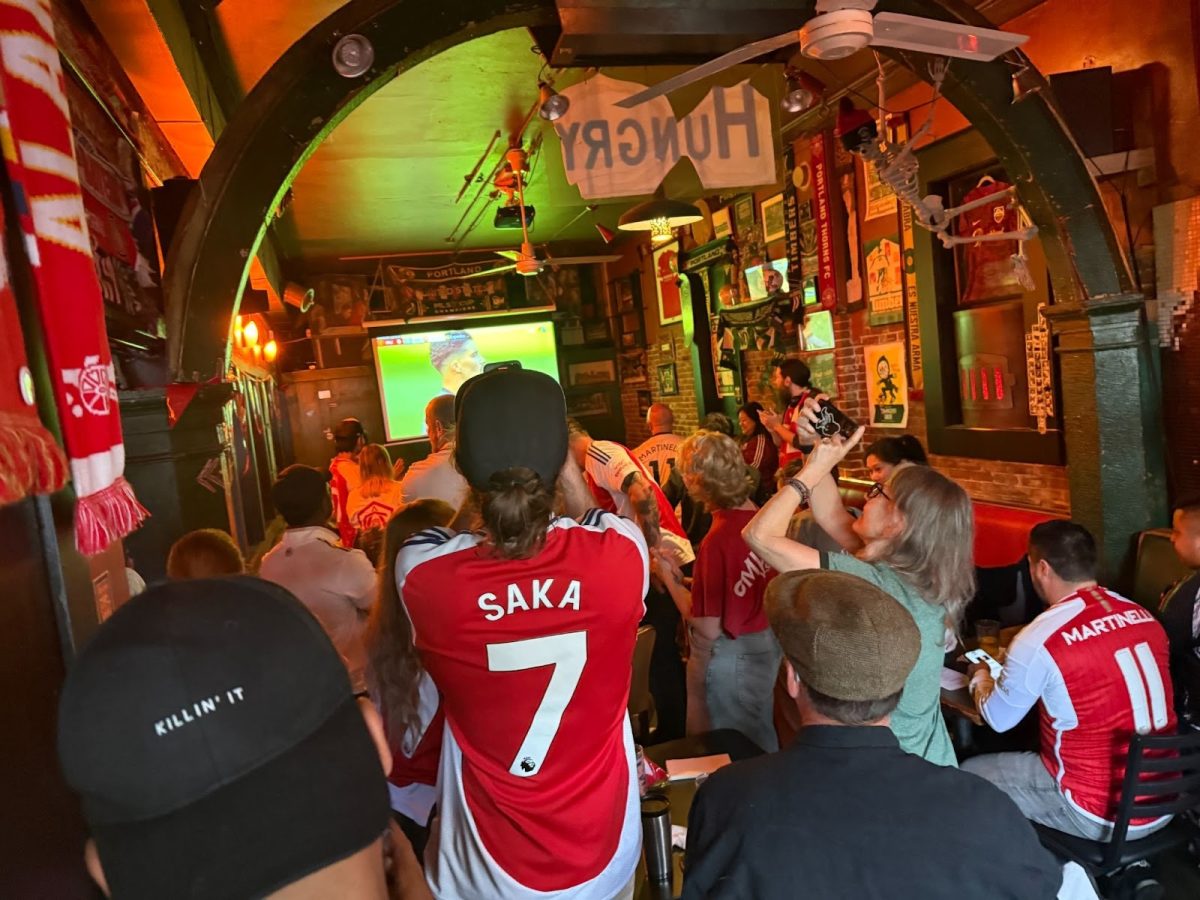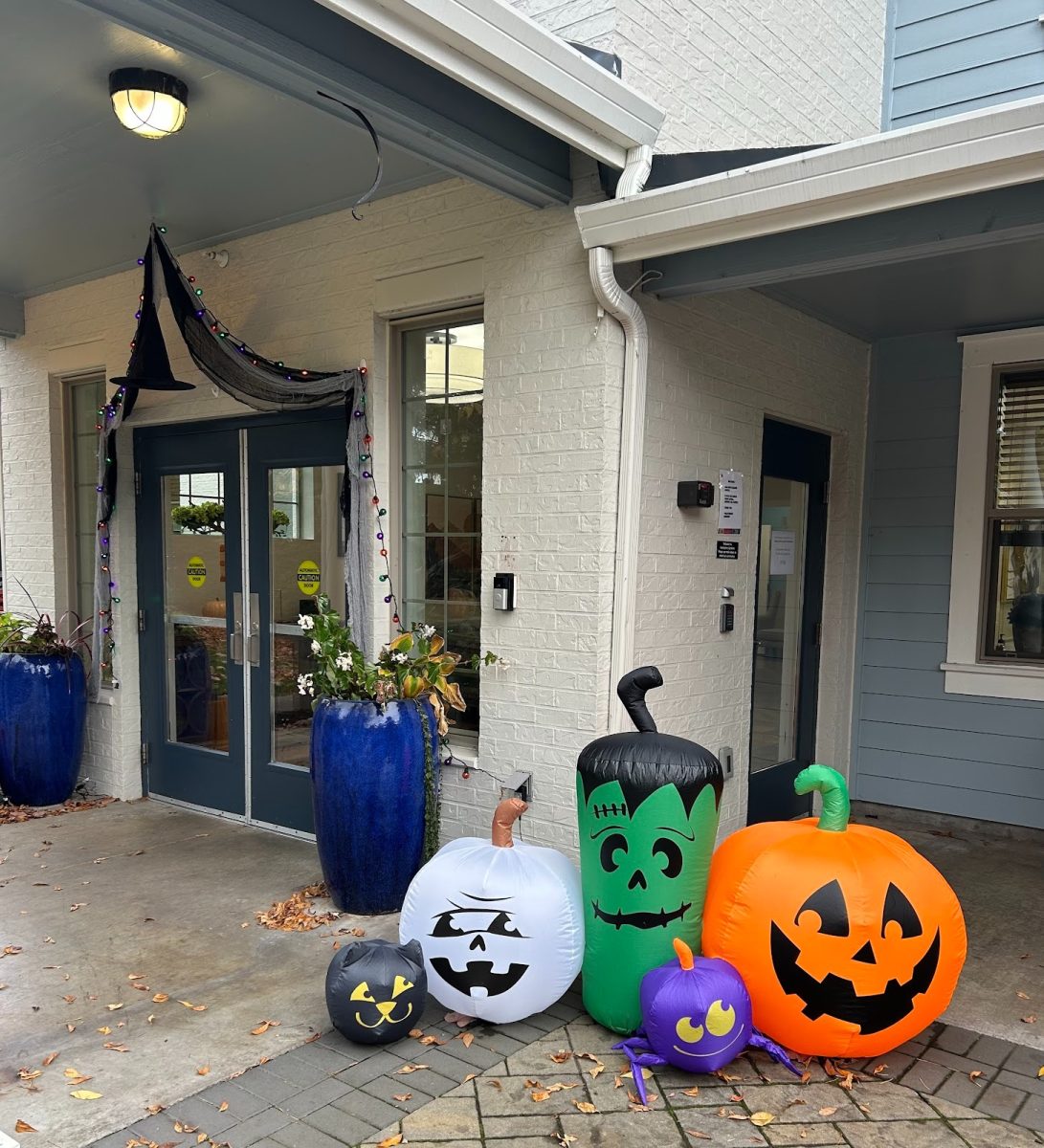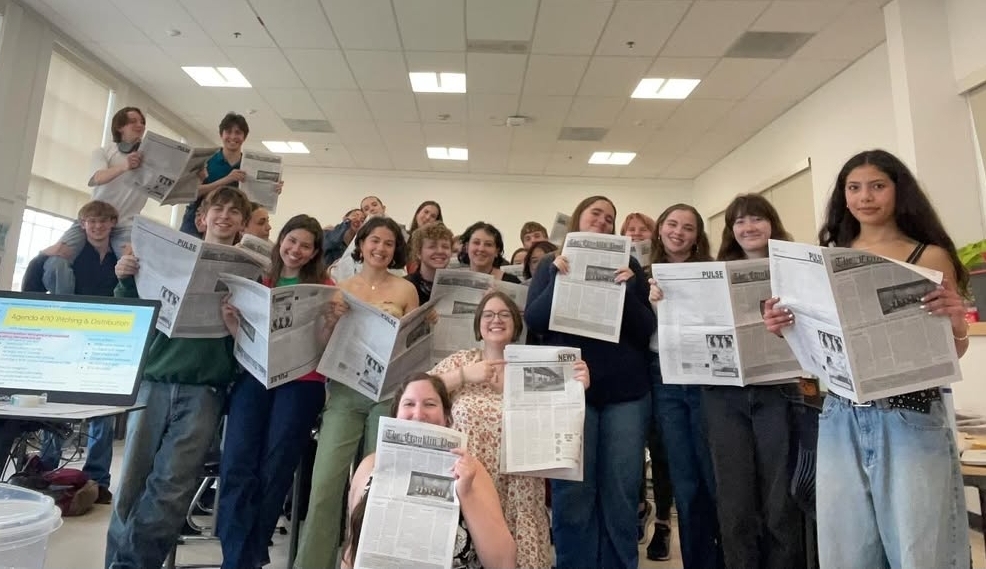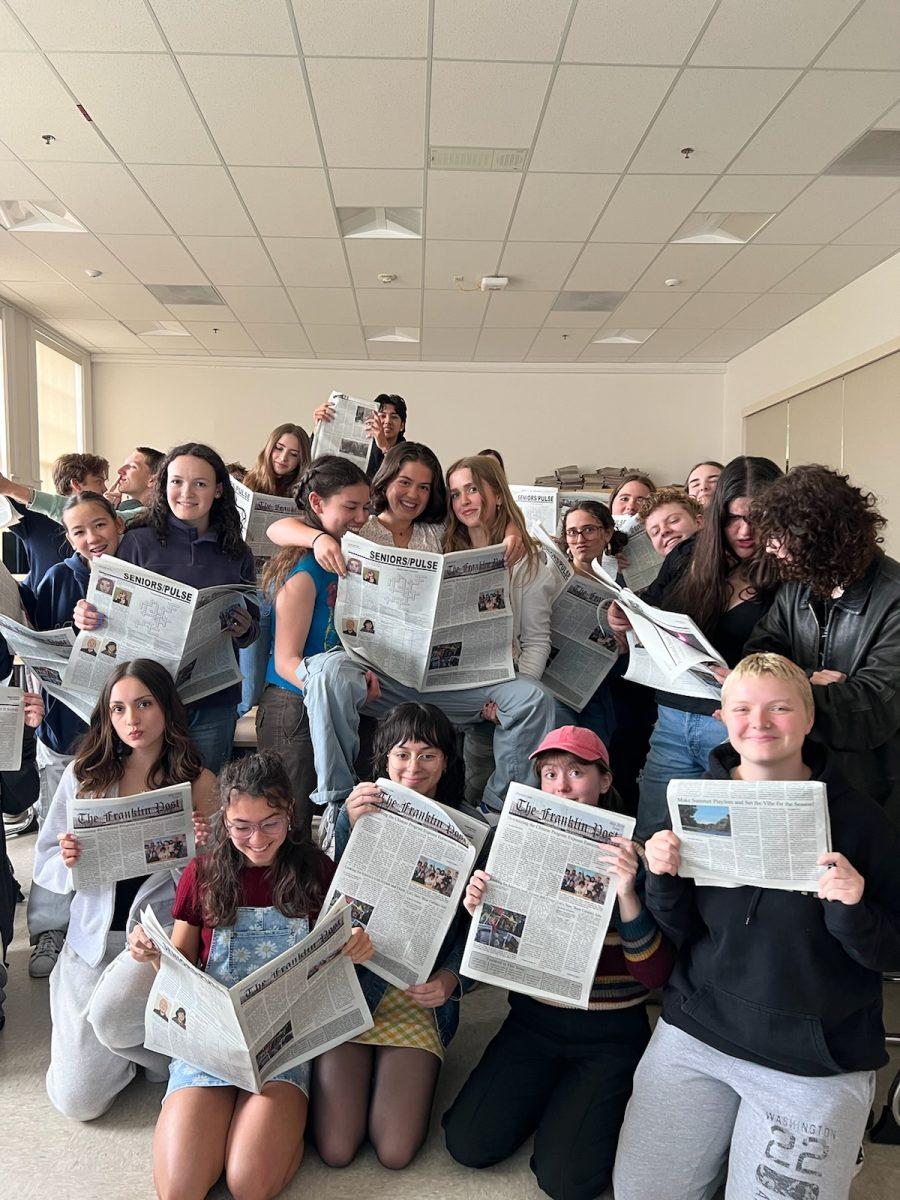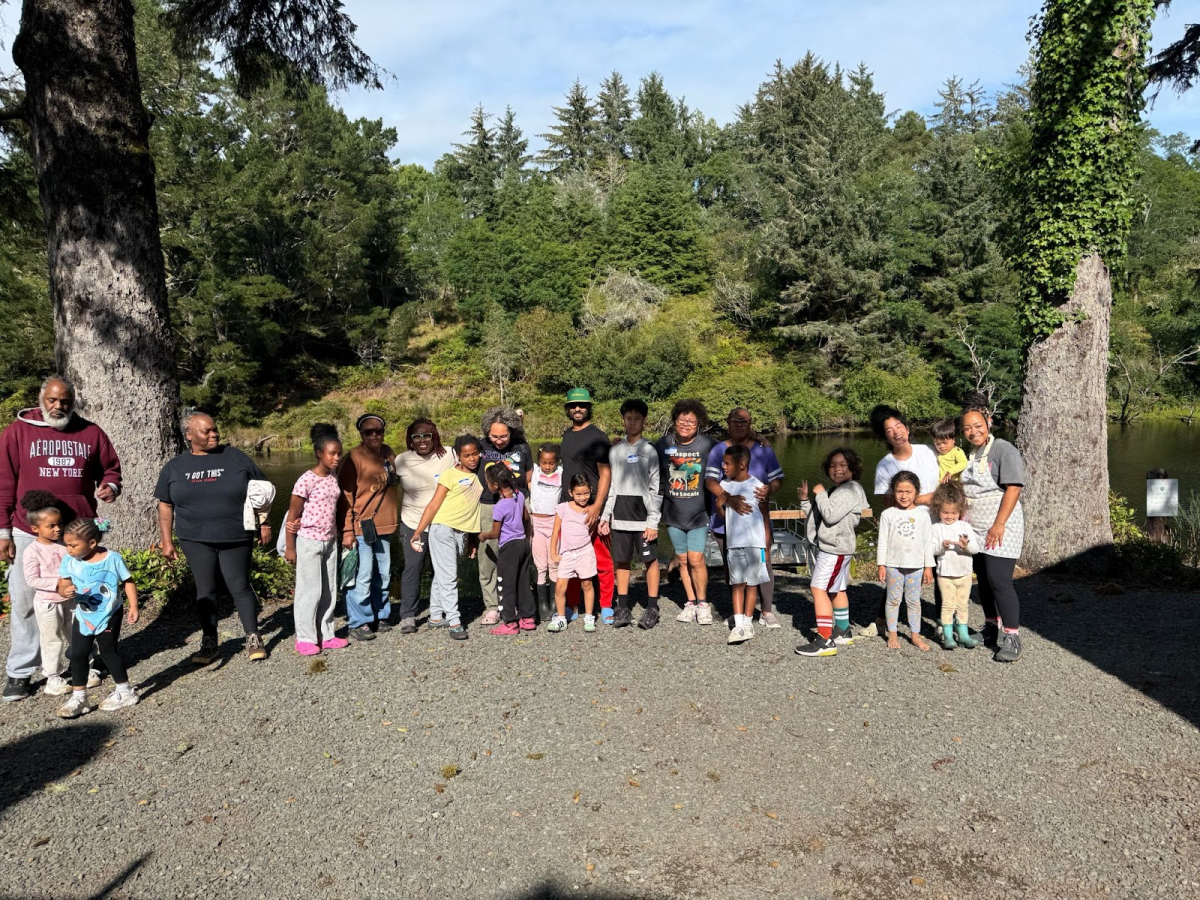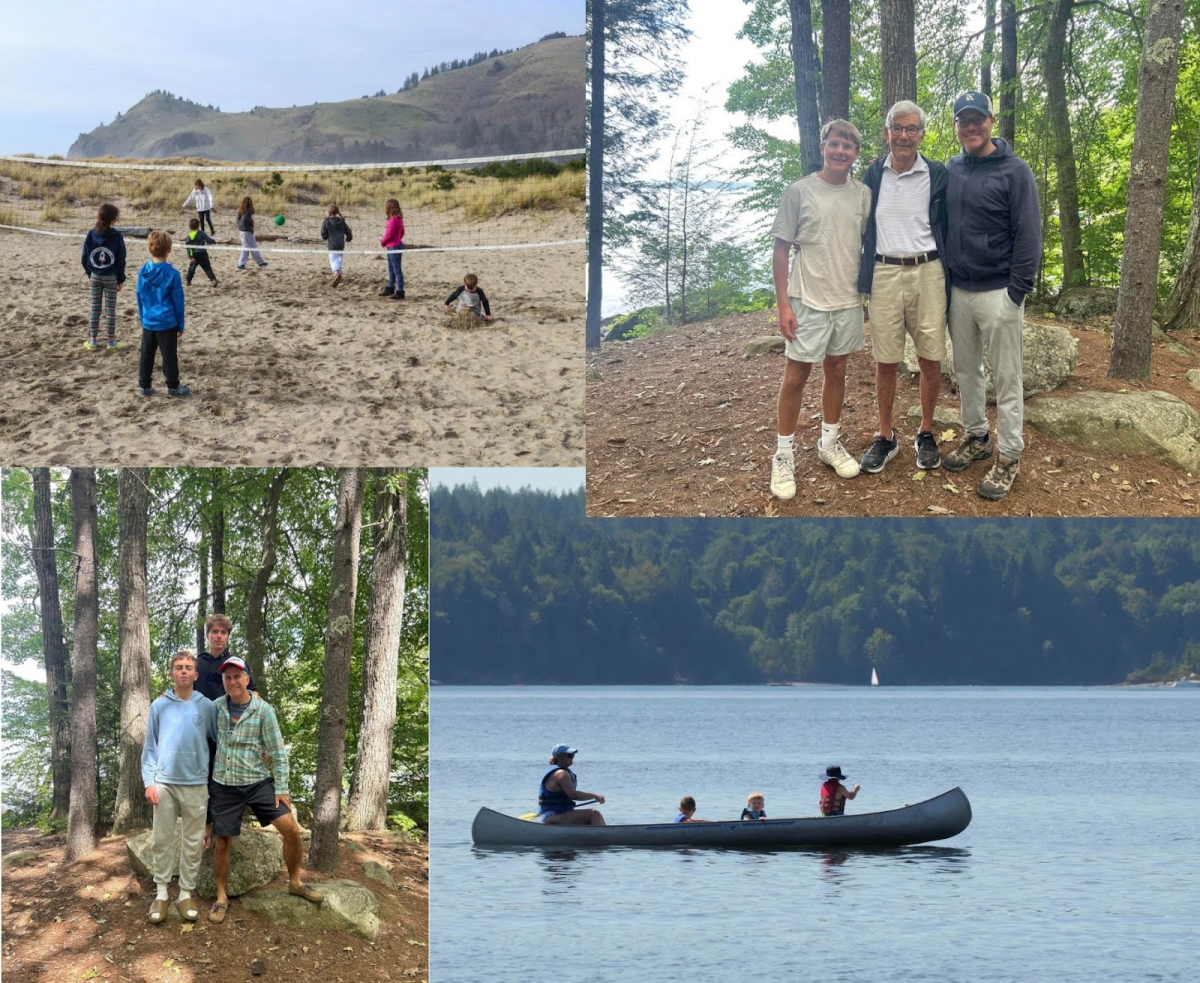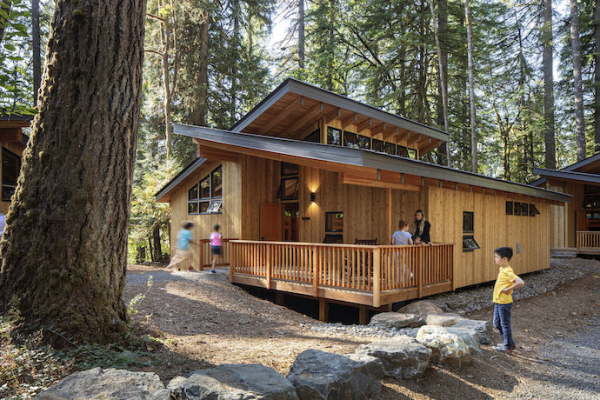
Rays of mid-afternoon sun scatter amidst rustic wooden cabins; dragonflies skate across a glittering pond; and a flagpole casts its shadow across a field littered with frisbees, soccer balls, and half-finished friendship bracelets — all to the tune of a far-off chorus of children’s voices. Since its opening in 1924, this has been a typical scene at Camp Namanu, an overnight summer camp for youth in Oregon. Camp Namanu sits on 552 acres of land along the Sandy River and serves over 1,500 children each summer, ranging from 2nd to 12th graders.
Beyond summer programming, the site is rented by the Multnomah Education Service District (MESD) to run Outdoor School in the fall and summer. Camp Fire Columbia, the nonprofit that runs Camp Namanu, hosts Before and After School and Teen Mentoring programs at Clackamas, Multnomah, and Yamhill County schools during the academic year. Per their website, all of these initiatives work towards their mission to “build lasting, equitable, and caring relationships with nature, others, and ourselves.”
Through these efforts, Camp Namanu has become a meaningful part of many Oregonians’ childhoods — and, for those who return as counselors, their adulthoods — which is perhaps why the November 2024 announcement of the “Save Camp Namanu” campaign was faced with an immediate outpouring of concern and support.
The appeal, issued by Camp Fire Columbia, asks for donations to help the camp raise $500,000 by the end of 2024 and another $500,000 by the end of the first quarter of 2025. As the appeal explains, “Without these funds, we are facing a very uncertain future for both camp programming and Namanu.” The message does not specify exactly what would happen if the organization fails to raise $1 million. However, a Nov. 1 Instagram post about the effort states, “We risk losing a vital part of Oregon’s outdoor heritage.”
The appeal explains that the need for funds is due to the increased cost of running camps, reductions in state and federal funding, the depletion of all of Camp Fire Columbia’s remaining reserves by the end of 2024, and $2 million of debt incurred during the construction of the eight “new accessible, inclusive and climate-resilient Sherwood cabins at Camp Namanu.”
The construction of the first phase of the Sherwood cabins began towards the end of 2021 to be primarily used for the camp’s 9-10-year-olds. The main goal for the cabin renovations was to increase accessibility. ZGF Architects, who worked with Namanu on the project, mapped out these plans after holding multiple large group engagement sessions — which included alumni, campers, and staff members — and two specific meetings hearing from Namanu’s LGBTQ+ staff and campers.
Amanda Hills, a principal at ZGF Architects, describes how “the existing cabins had reached their full life span … and there was no way to renovate to make them accessible.” Due to this, renovations required Namanu to construct entirely new buildings in place of the old ones. They were unable to use any of the old materials for key structural components and instead repurposed some of the old wood for new railings.
The final product, completed in February of 2024, includes Americans with Disabilities Act accessible pathways for those with mobility issues; sensory-friendly, low-sound lighting for neurodivergent community members; and private restrooms within the cabins to offer a safe place for transgender, nonbinary, or gender-questioning campers to change or use the bathroom. ZGF Architects highlight on their website how indoor bathrooms also offer “staff and campers relief in the middle of the night in the building where they sleep, rather than forcing young people to walk outside in the dark to the existing communal bathroom.”
ZGF Architects took various cost-saving measures throughout the construction process, such as sourcing from local mills and using dimensional lumber. Due to market influences, the cost of construction had increased by the time phase two of the cabin construction — which renovated the last five cabins — began, so ZGF Architects worked with the contractor to modularize the cabins — meaning the contractor constructed the walls and frames of the buildings in a warehouse rather than on-site. This supported lowering costs by reducing on-site labor hours and reducing the schedule for fabrication and installation. Along with this, ZGF Architects donated 50% of their fees for the project to help Camp Namanu keep costs down. However, even with these efforts, the construction costs increased each year.
Namanu had received $3,020,289.08 to go toward the project through grants and hosting fundraisers, but to access that funding, many grants required Namanu to pay the amount needed for construction upfront and then be compensated later. Camp Fire Columbia Executive Director Gina Sander highlights how, as such, Namanu took out a $2 million loan they believed “would be low risk,” because the camp would be able to use the grant money to quickly pay off the loan.
However, the project ended up costing Namanu $5.4 million. Sander attributes this to the project taking over two years to finish and the fact that production costs rose yearly. Whatever the reason, the unexpected costs rose, and Camp Fire Columbia willingly continued with the project, leaving them deep in debt. Sander illustrates how Namanu administration reacted to the increased costs, saying, “It was too late to stop everything from happening, but we knew that we weren’t going to have the funds by the end of it to pay back.”
$2 million in debt, Namanu had newly renovated cabins set to support diverse campers but no security that the camp would survive long enough to host them. Sander says, “There were definitely times in November and December where we all expected to lose our jobs and see the program completely shut down.”
These fears were only heightened by the simultaneously increasing costs of running a summer camp. Lauren McMillin, public relations and communications manager for the American Camp Association, explains how heightened costs are felt across the country: “Due to inflation and economic changes, prices are up for industries across the board. This may include the cost of food, insurance, staffing, and more.” McMillin adds, however, that “[though] it is a challenging economic environment to run a small business, we would not characterize most camps as [financially] struggling.”
For Namanu, their financial struggles have been heightened by rapidly increased costs for the food needed to feed 200-300 people each week of the summer, maintenance projects across the 100-year-old camp, and wages for seasonal workers. During the COVID-19 pandemic, Namanu received various funding and grants that allowed them to increase their camp counselors’ pay from the starting rate of $35 a day in 2019 to the current starting wage of $85 a day. Martin Chasehill, Camp Fire Columbia’s business director, explains, “We raised wages during COVID, and then suddenly that money expired, and we didn’t get any more of it, and it just became impossible to maintain the increased expenses.”
These factors have all contributed to increased registration fees for camps from $865 per week in 2024 to $1,025 in 2025. “We really held off for a while from increasing our fees too high, but the costs started to outpace us,” highlights Sander. Along with raising camp fees, Namanu has worked to stay afloat financially by moving certain kitchen staff to seasonal positions and delaying nonessential maintenance projects.
Beyond Namanu, efforts to mitigate the debt impacted the entirety of Camp Fire Columbia. At Camp Fire Columbia, the HR department was removed, the camp director position was eliminated, and the finance team was condensed to one person. In addition, they made changes to their Before and After School and Teen Mentoring programs, decreasing the number of school sites they planned to serve for the 2024-25 year. As Chasehill explains, “June is when we look at enrollment for the next year, and when we saw the enrollment as low as it was, we decided that we couldn’t open those sites the next year.”
Yet more needed to be done for Camp Fire Columbia to survive, leading to the November 2024 appeal. According to Chasehill, this “was a general campaign to … try to save the entire organization.” However, the post on their website about the appeal is titled “Save Camp Namanu Appeal” and focuses solely on the continuation of Namanu. It includes no explicit mentions of Camp Fire Columbia’s other programs.
A month later, in December 2024, Namanu would become Camp Fire Columbia’s only program. The Before and After school programming transitioned to YMCA management, but the Teen Mentor program, which primarily served low-income youth and youth of color, was dismantled.
Antonio Servín-González was one of the middle school youth development managers in the Teen Programs department and was laid off as a result of this decision. He recalls, “My immediate reaction was anger. I’ve poured so much love and work into the organization, and they made little effort to work with us on solutions.” Servín-González claims he was notified about the potential for layoffs over the summer and then again in October, yet “was given false hope that our department would stay intact and was under the impression that our program was going to continue until three weeks into December.” In contrast, Chasehill says the decision to close the programs was made “either [at] the very end of November or the very beginning of December.”
Initially, Chasehill attributed the removal of the school-based programs to the fact “they just weren’t financially viable.” However, when questioned about his prior statements highlighting that Namanu was also struggling financially, he elaborates: “The main difference is [that] programs like our Before and After School [program were] run out of school sites, so we just rent those schools, whereas we own Camp Namanu and so that was a big asset that we have to fall back on, as well as it just has more of a cultural significance.” He continues, “So it just felt like, if we were only going to be able to save one part of it, that was the piece that felt most important to us and the board. So there’s definitely partly a financial decision because we had the land to fall back on, but there’s also a lot of emotion tied up in Namanu being a place that people went to as kids.”
Servín-González stresses that those able to attend Namanu as children are primarily white and upper class. Furthermore, he states, “The goal was ultimately to eliminate all programs that were not Namanu.”
So far, around $454,000 has been raised through donations. Sander highlights that while $150,000 of the money raised was donated by Dean and Cathy Lemman, the rest was composed of a matching campaign and smaller, individual contributions from those who could contribute only $50 or $100. “I think it speaks to the impact that camp has had on people’s lives, whether directly or people that they care about,” explains Sander. For example, while Dean Lemman has no direct ties to Namanu, his wife does. Lemman states, “I hope it continues to be a great resource for families and children to attend; it’s a wonderful place.”
From the recent fundraising efforts, Camp Fire Columbia has allocated the money needed to run the camp this summer. However, Sander explains that they will “start running into a deficit again towards the end of August.” They aim to raise another $450,000 by that time, allowing them to be on a path to start functioning under normal levels of fundraising again by the end of the year. Sander remains hopeful for the future of Namanu and their ability to fundraise, saying, “It’s still a lot to do, still a lot of money to raise, but it feels like there is a path we can see out of it. … People really showed up, and it felt really uplifting.”
Outside of fundraising, the numerous changes to Camp Fire Columbia have the potential to make the organization more financially sound for the future, even as costs for running summer camps continue to rise. Since 2015, four out of eight tax returns available on Camp Fire Columbia’s website have reported more expenditures than revenue. Former Camp Fire Columbia CEO Josh Todd attributes this to multiple factors, including a mismatch between when they file taxes and the end of their fiscal year. He explains, “Taxes run January-December, our fiscal year ran July-June, so in December, our expenses for the year could be negative, but when looking at July-June they could be balanced.” He also mentions factors such as the continuation of programming investments during a pandemic-related budget deficit and accounting procedures that impact the way construction expenses show up. In reference to inquiries about the tax returns, Chasehill states, “We’re definitely spending a lot less money than we did previously.” The most recent tax return has not yet been released.
As cabins and campfires are being prepared for the upcoming summer at Camp Namanu, many people are hopeful for its future. There is far less hope, however, for the future of Camp Fire Columbia as a whole. Chasehill says, “Our guess is that everything, eventually, when it can be, will be moved to the Camp Namanu entity and that Camp Fire Columbia will probably go away, but that could be years away.” Whether or not this does occur, Chasehill contends that their organization is currently unable to serve in the same communities in which they have made impacts today. Without easily accessible school programs, Chasehill explains, “We will end up serving less lower-income folks due to these changes.”
Namanu has already taken the first steps to separate officially from Camp Fire Columbia. In 2023, Camp Namanu became its own nonprofit. Chasehill describes that one reason for this decision was to ensure that the property would be out of reach of any lawsuits that could be taken against Camp Fire Columbia. Along with this, Namanu was recognized as a National Historic District in the National Register of Historic Places, which offered the camp more opportunities for different grants. Todd also highlights how fundraising goals played into the decision to separate Namanu, saying, “Alumni who cared deeply for Camp Namanu wanted to be able to donate directly to Camp Namanu. We hoped by having a separate 501(c)3 it would promote more donations and giving.”
The acceptance to say farewell to Camp Fire Columbia in place of Namanu is not a surprise for Servín-González, who explains, “I believe that Camp Fire Columbia will no longer exist and Camp Namanu will be the entity. They’re going to be okay because the program is for those with means.” He adds, “Once all the programs that served low-income and youth of color went away, the money began pouring in. Namanu/Camp Fire Columbia was once again in the good graces of their predominantly white upper-class alumni.” Namanu offers application-based scholarships to those who cannot afford to attend.
As the sun rises each day over Namanu’s new cabins, pond, and field, rapid organizational and financial changes may mark the sunset of Camp Fire Columbia’s existence. Camp Namanu seems headed toward long-term survival, but uncertainty still envelops both nonprofits. Regardless of their future, the impact these programs have had on Oregon youth remains clear. In the words of former Executive Director of Camp Namanu Janette Kunkel, “Because hard decisions were made … Namanu is continuing and will rise strong again. It is a beloved camp with a vast community who will ensure it’s around for another 100 years.”
